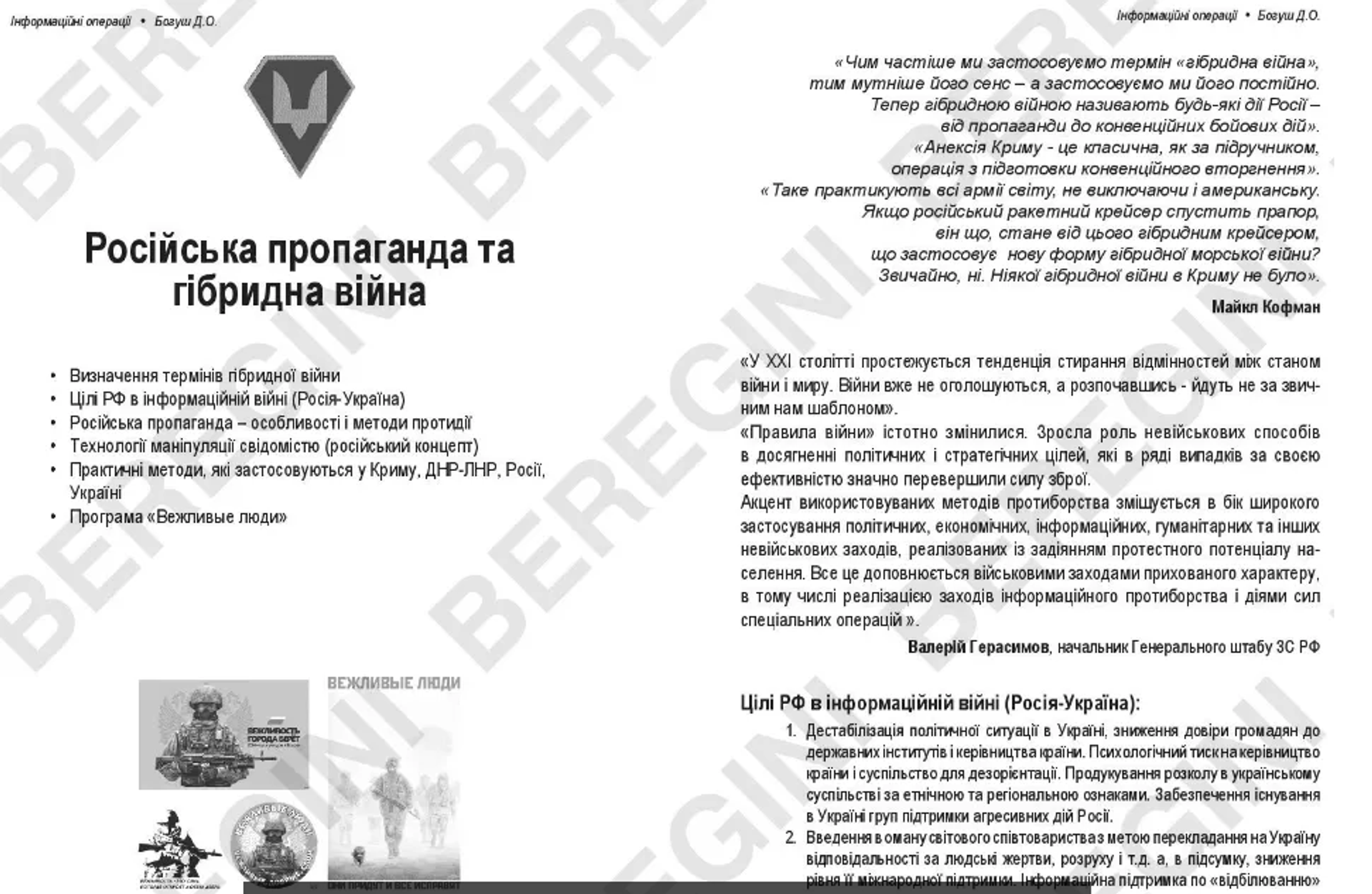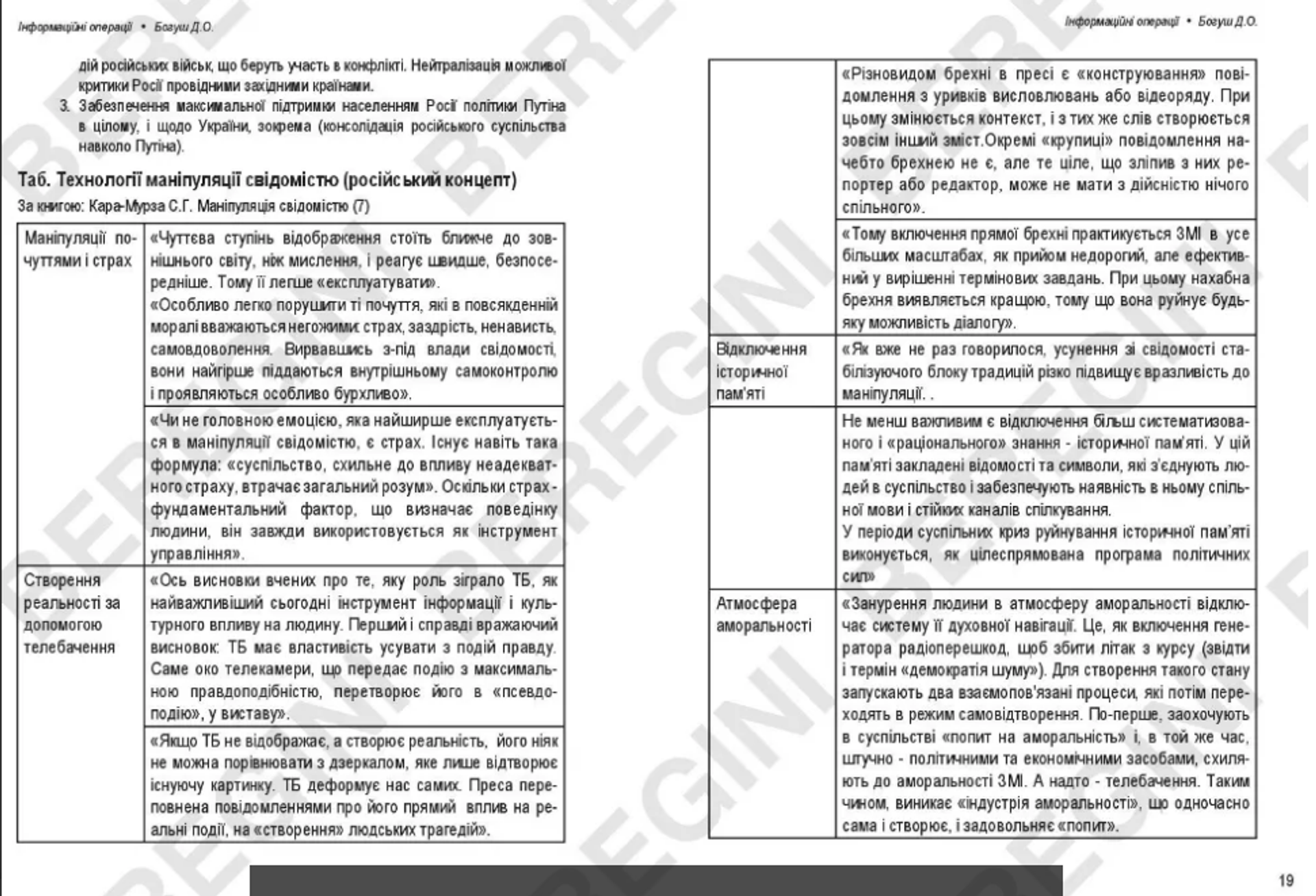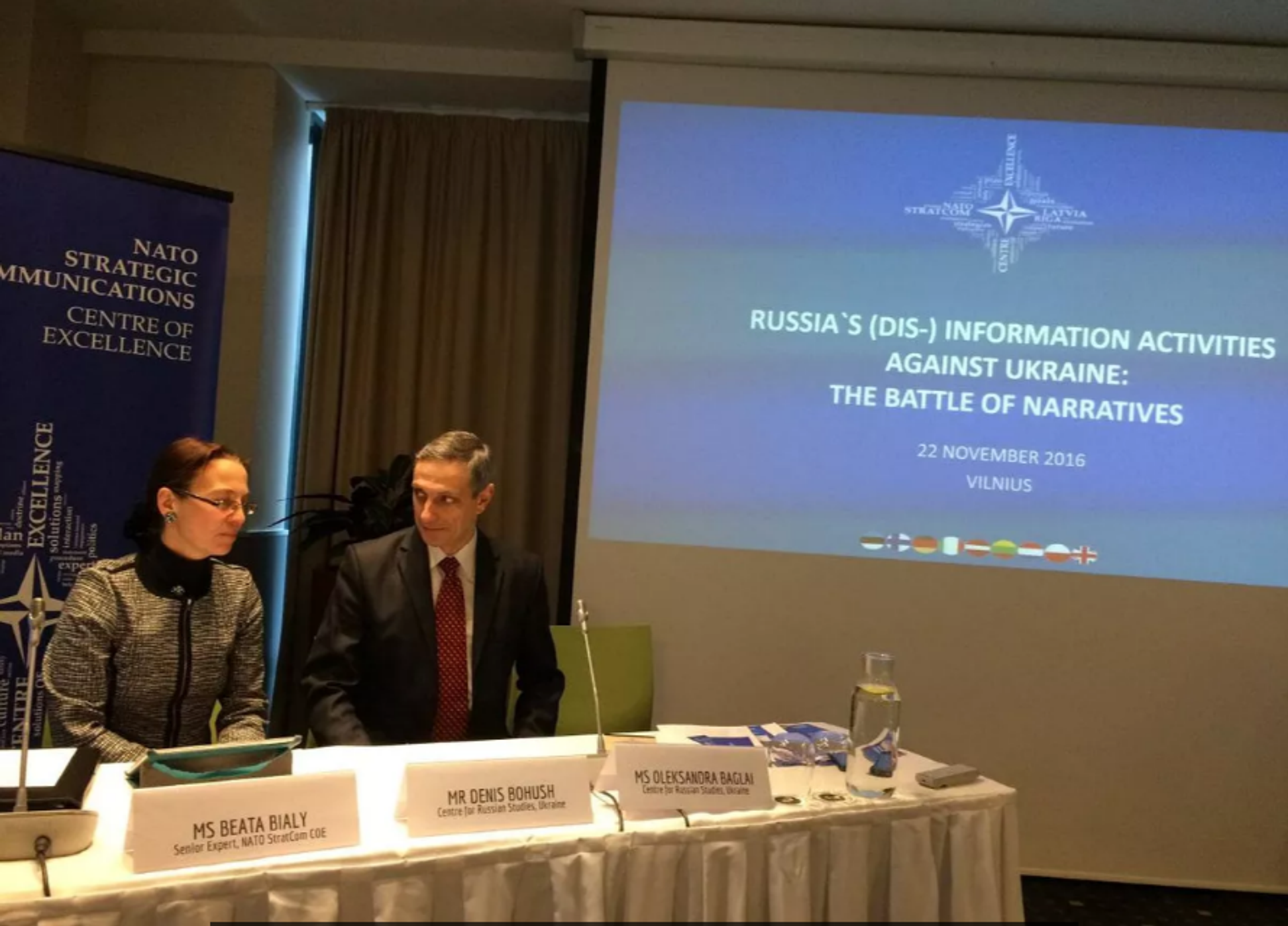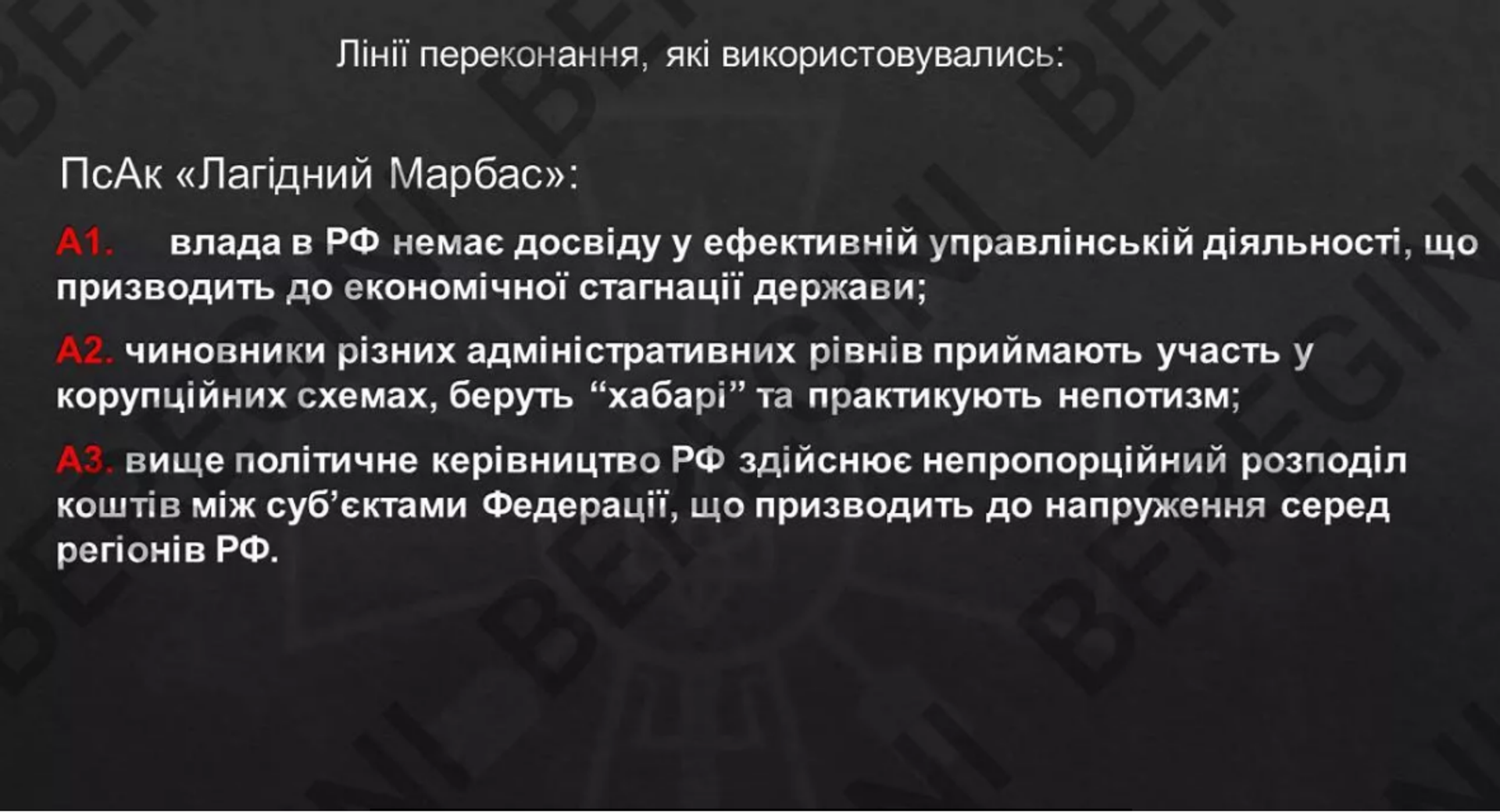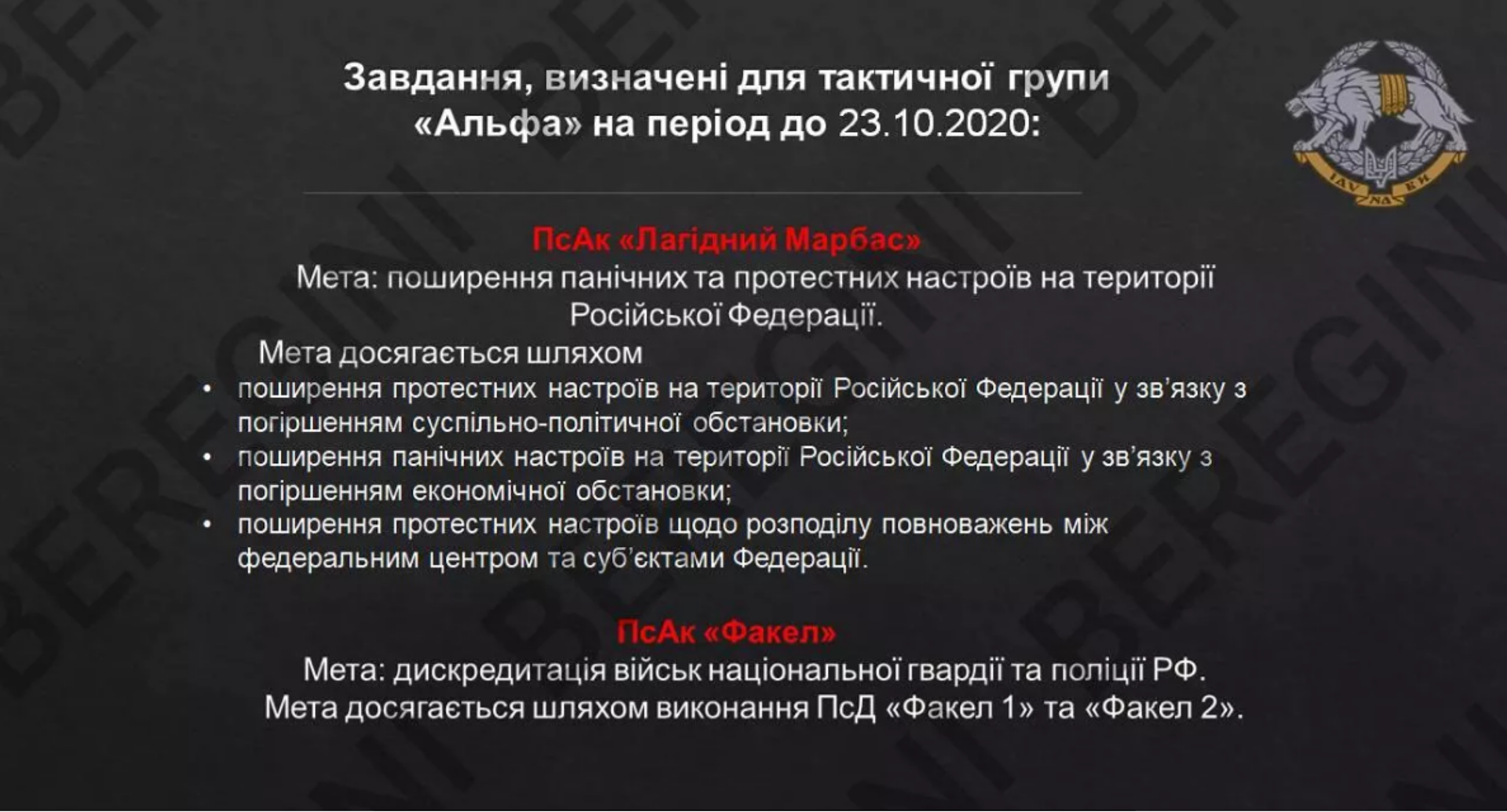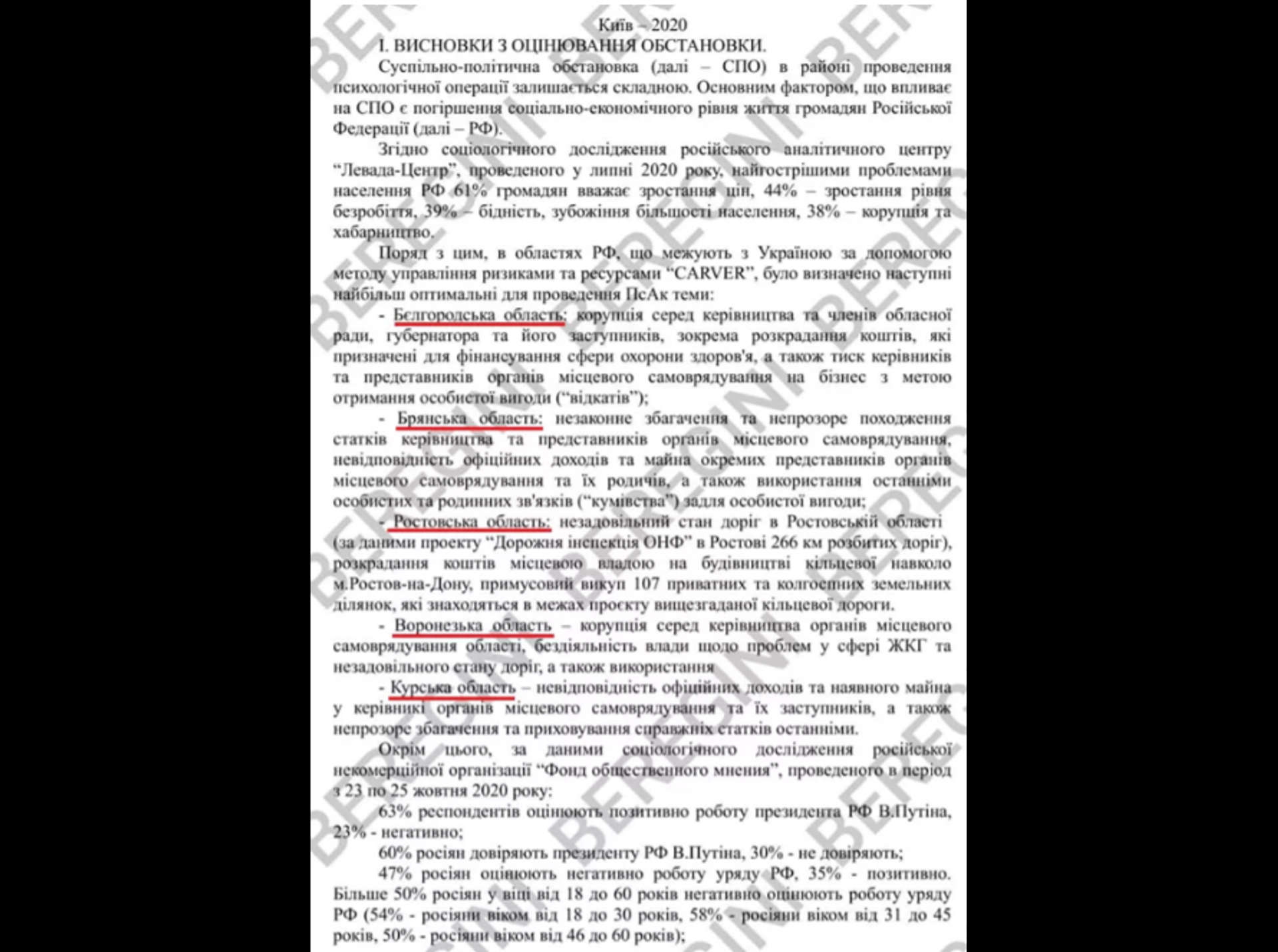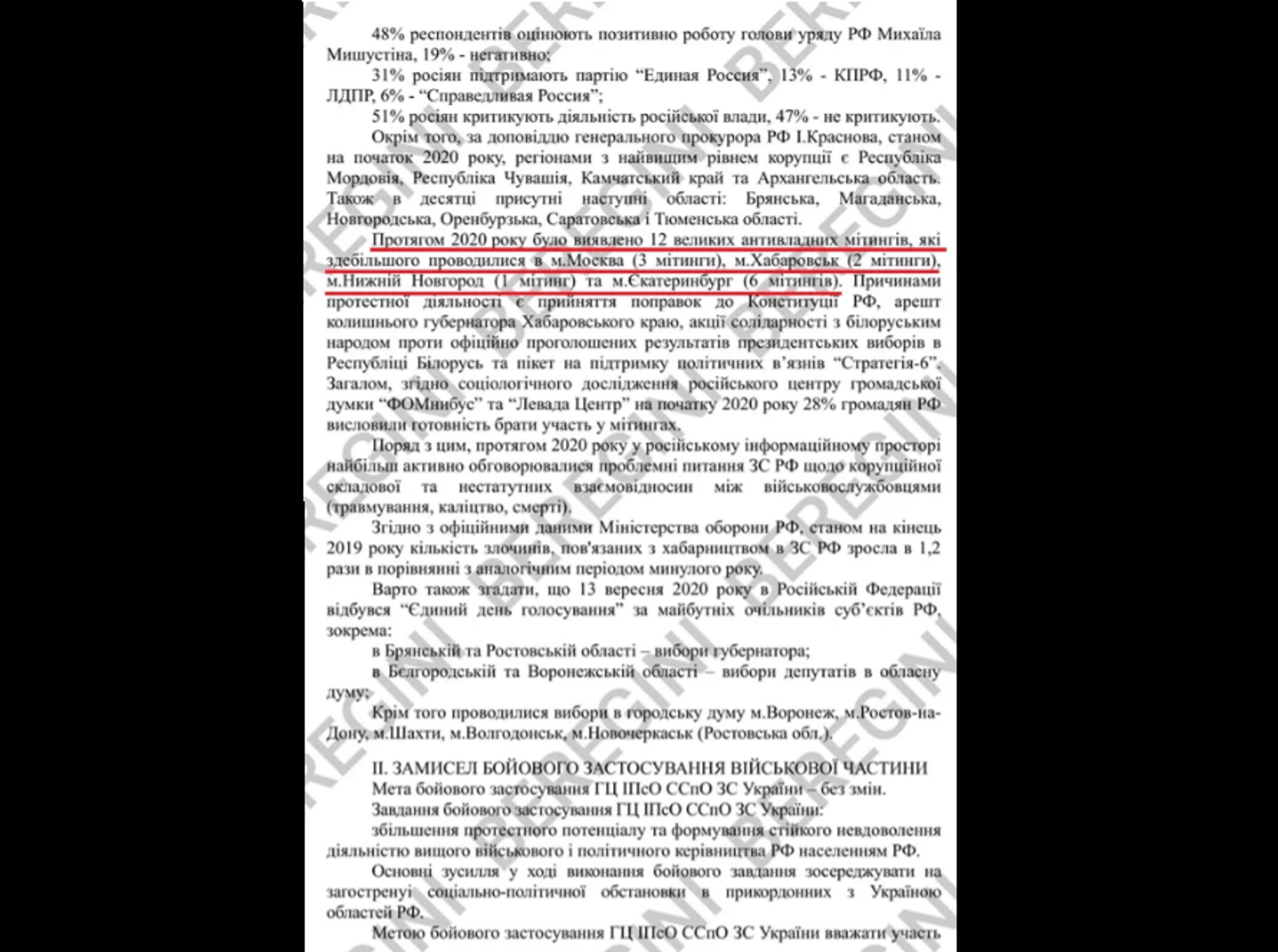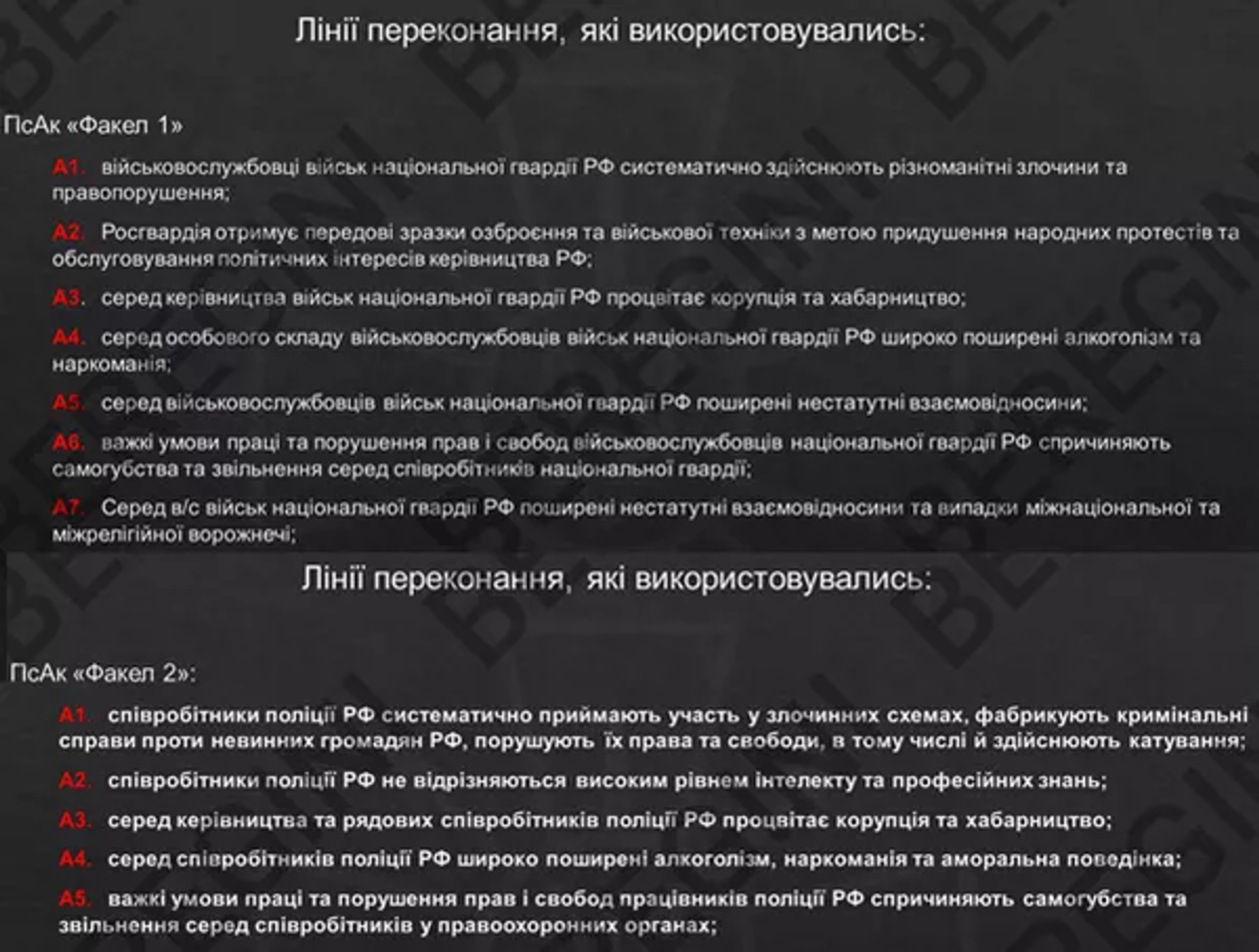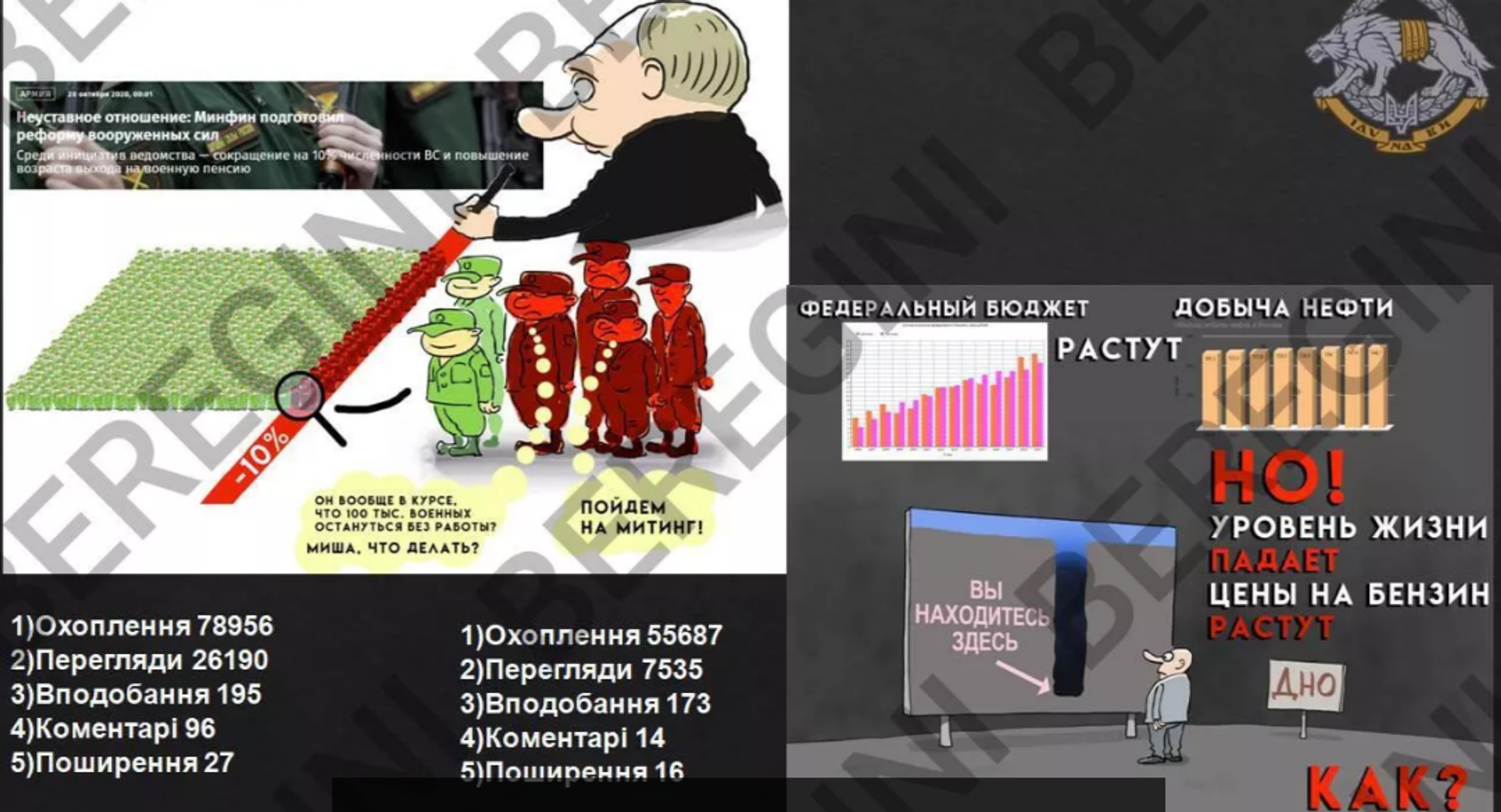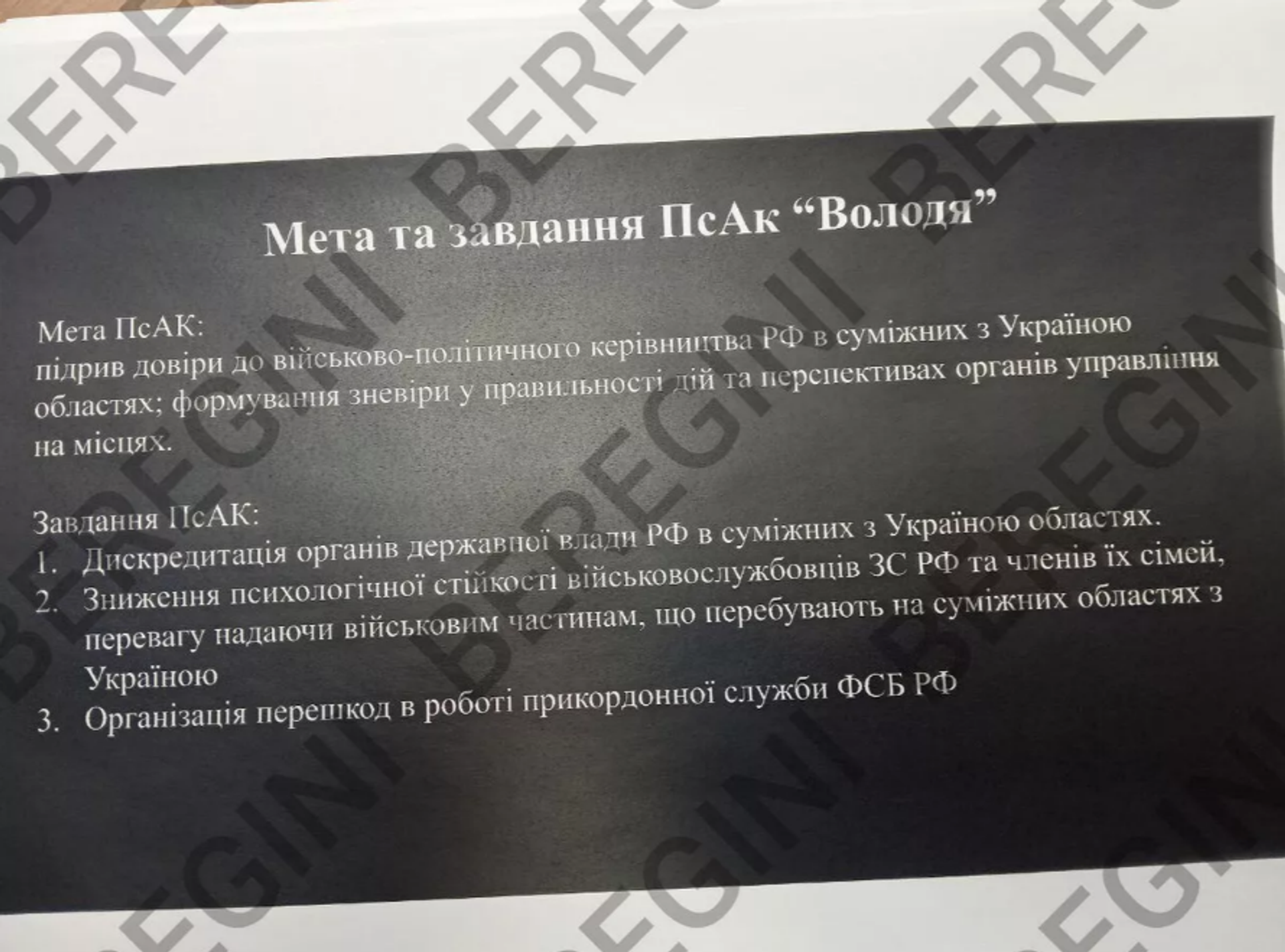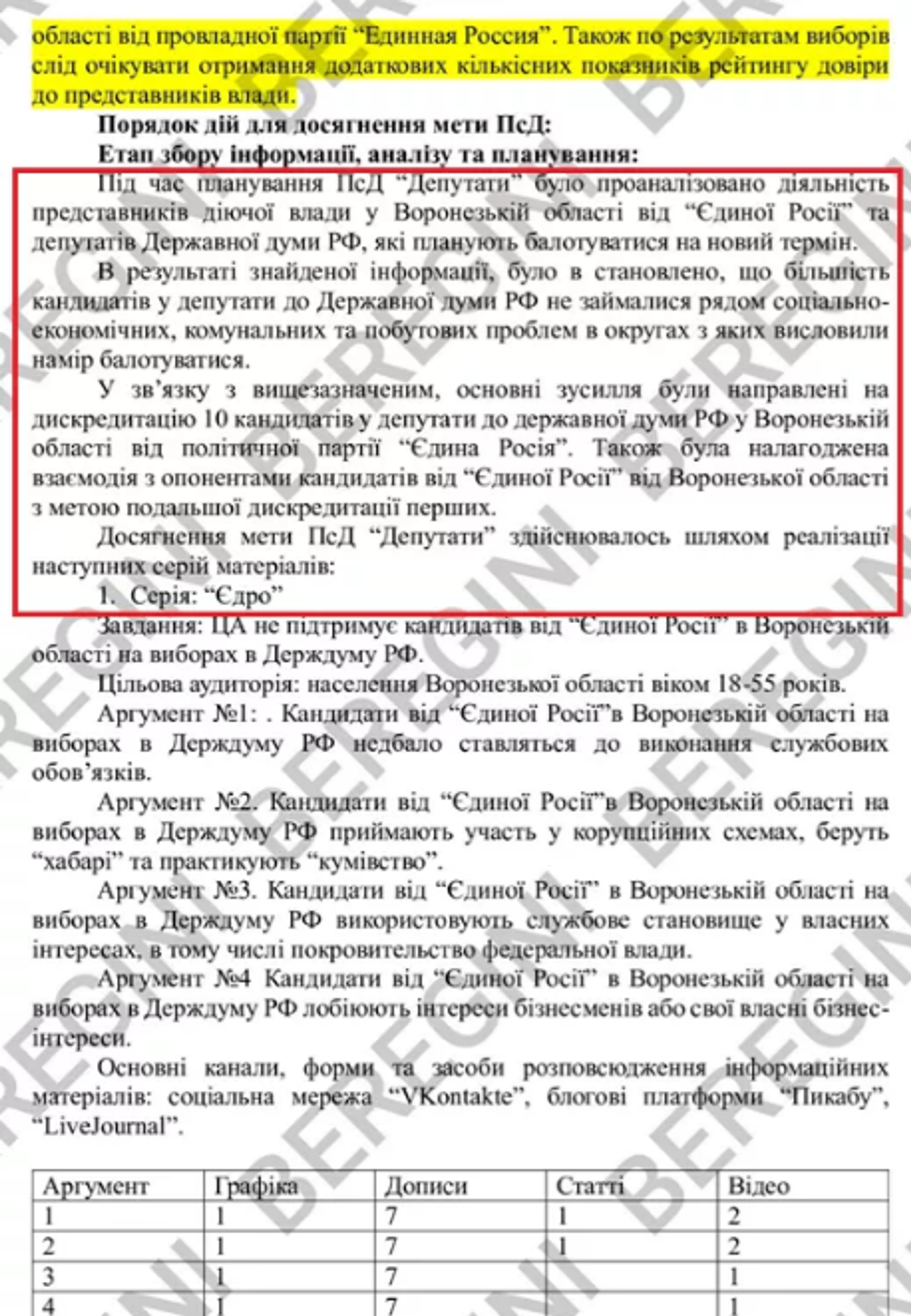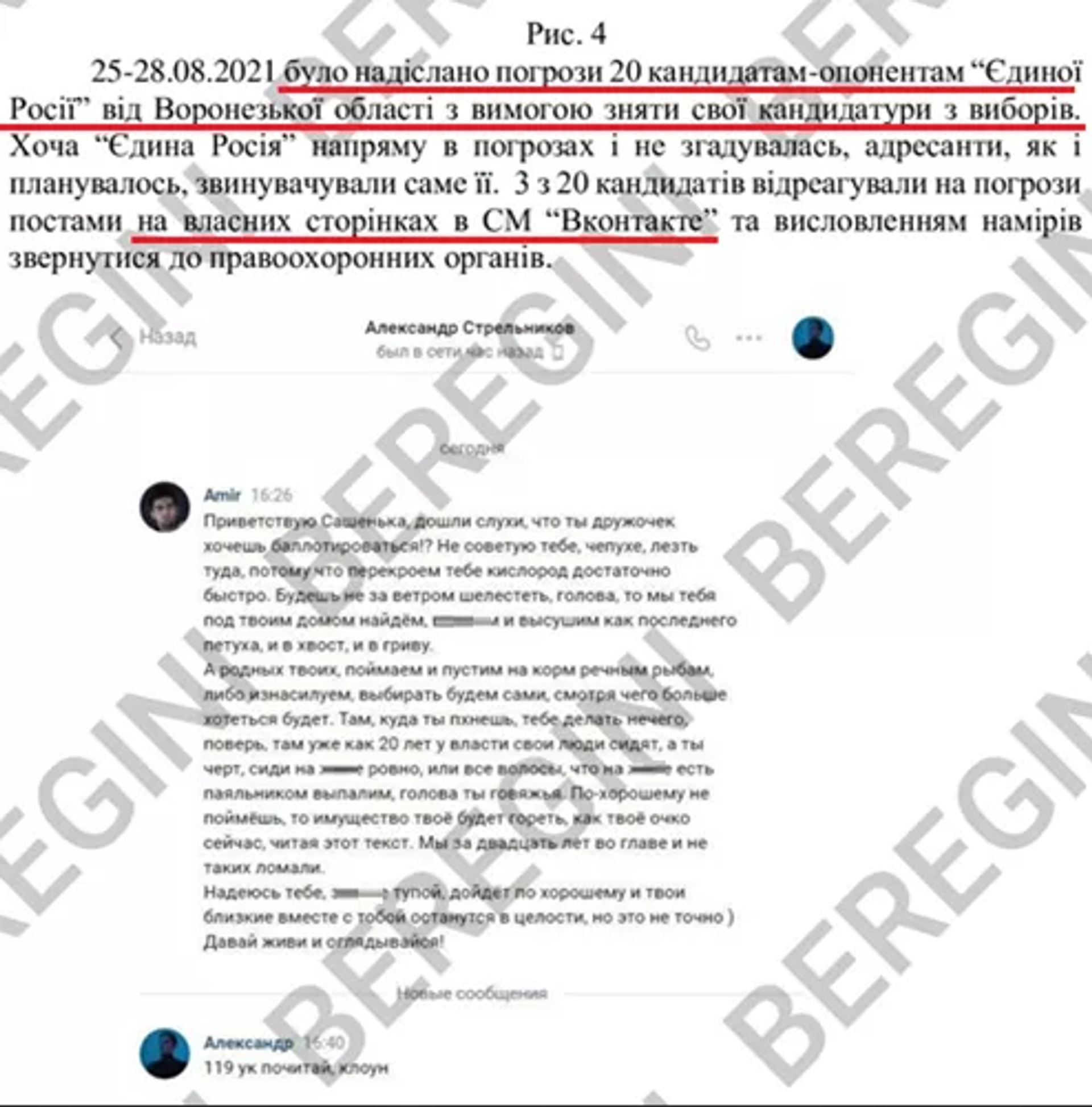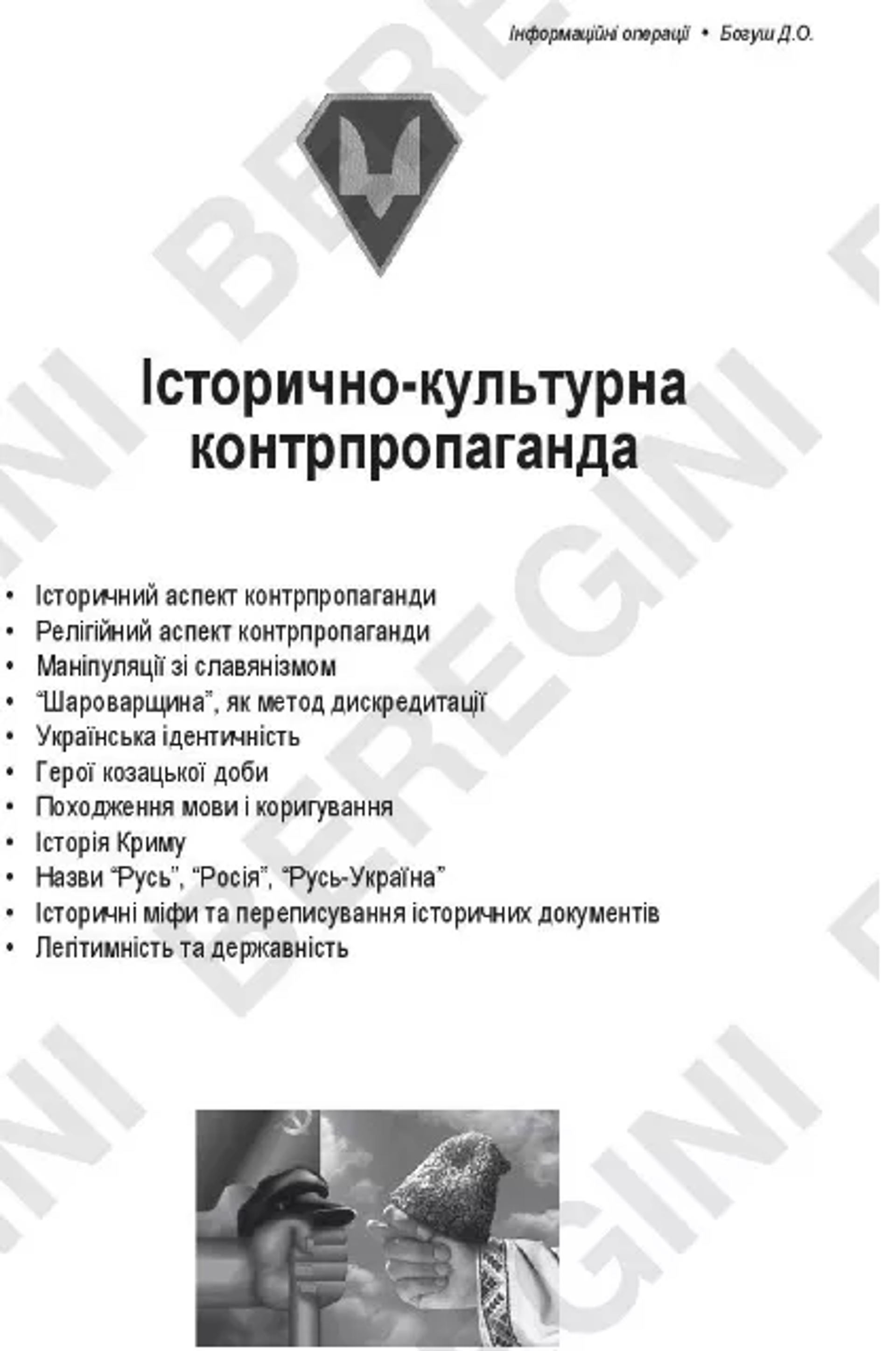https://sputnikglobe.com/20220521/info-saboteurs-how-the-ukrainian-centre-for-informational-and-psychological-operations-works-1095680364.html
Info Saboteurs: How the Ukrainian Centre for Informational and Psychological Operations Works
Info Saboteurs: How the Ukrainian Centre for Informational and Psychological Operations Works
Sputnik International
Telephone terrorism, debit card fraud, information attacks, massive comments duplication on popular social media posts. 21.05.2022, Sputnik International
2022-05-21T08:42+0000
2022-05-21T08:42+0000
2022-05-21T08:57+0000
russia
ukraine
information war
information warfare
donbass. genocide. 2014-2022
https://cdn1.img.sputnikglobe.com/img/07e6/05/15/1095681188_0:0:1920:1080_1920x0_80_0_0_80d8fdcdd9861f13a4bf81f975d067eb.jpg
"Troll factories" and entire campaigns to provoke fear and panic. This is the work of the Ukrainian Armed Forces’ centres for informational and psychological operations. Who has launched this hybrid warfare front, and what is its purpose?Centres of Informational and Psychological Operations (hereinafter referred to as CIPSO) have proved to be among the most controversial and scandalous in terms of working practices within the Ukrainian Army. These centres are part of the Special Operations Forces of Ukraine (before 2014 they were part of the Ukrainian Navy's intelligence service). Their main "combat" task is information and psychological sabotage in the enemy's domain. In this article, we will tell you about some large-scale operations on the territory of Russia, where Ukrainian CIPSOs played a role.Most of the materials used in the article appeared on the web thanks to the Ukrainian hacker group "Beregini", which has been operating against the Kiev government since the start of the conflict in Donbass.What Are These Centres?It is argued that CIPSO forces had been incorporated into the Armed Forces of Ukraine by 2004; at the time, they were part of the Ukrainian Navy's intelligence service. For example, one centre was based in Sevastopol and another in Odessa. By 2014, after the ‘Revolution of Dignity’, the centres of informational and psychological operations were transferred under the jurisdiction of the Special Operations Forces (SSO).Documents available on the web revealed that the SSO has four such centres:Each of these centres collects and analyses information to discredit the enemy in the information space, create a positive image of Ukraine in the world and prepare information and psychological diversions.Simply put, the main activity of the Ukrainian CIPSO is to support the information front on its own territory, in the enemy's space and on the territory of potential "partners" and allies.Under NATO StandardsThe Ukrainian Defence Ministry trained Ukrainian officers, soldiers and freelancers in the art of information-psychological warfare using some of the world's best practices. No one makes any secret of this. For example, Alexei Arestovych cited in one of his interviews American textbooks on information warfare as an example. He now works as an adviser to the head of President Zelensky's office, but for a long time before that, Arestovych served in the Chief Directorate of Intelligence of the Ministry of Defence of Ukraine.The Special Operations Forces were established as one of the key units of the Ukrainian Navy. The Ukrainian Special Operations Forces website presents the structure of the main units and products, copying, according to an officer of the Special Operations Centre, a similar system of units and products which is used in the United States.As in the US military, Ukraine has four IPSO centres. Several documents show that the classification of information products is also based on NATO standards.In 2018, the UAF SSO prepared a training manual on "Information Operations". Many important terms are given in parallel in English. Hence, it can be inferred that the methodological framework was written according to or borrowed from the standards of similar NATO units.Russia is a Special TargetThe manual has an entire paragraph on countering Russia: “Russian Propaganda and Hybrid Warfare” (pp. 16-19).The new CIPSO officers were explained that their task was to counter “Russian propaganda”, which, according to the SSO methodology, is divided into four groups. For example, this is a quote from the chapter on “Russian Propaganda and Hybrid Warfare”:"Information manipulation techniques: the Russian concept:That means that a CIPSO fighter must be aware of the Russian information threat and understand how to build an effective psychological campaign to counter it.The author of the course for the UAS SSO is someone named D. O. Bogush. According to data disclosed by the hacker group Beregini, Denis Bogush, one of the key PR people for anti-Russian propaganda, has participated in NATO StratCom (Strategic Communications) conferences on "Countering Russian (dis)information" in Vilnius and Kiev.Operations Against Russia: Telephone TerrorismCIPSO's most sensitive, high-profile campaign targeting ordinary Russians, bordering on crime, has been mass telephone fraud. Since 2020, there has been a wave of calls across Russia supposedly "from Sberbank's security service" and then from other banks, departments of the Interior Ministry and the Federal Security Service of Russia.It is likely that the practice of taking money from Russians (the scammers did not shy away from "scamming" pensioners and the disabled, who transferred the scammers their last funds, including "funeral funds" and money set aside for medicine) was also a training exercise in preparation for more serious tasks.How Call Fraud and Diversion Centres WorkThe flow of telephone fraud reports in Russia has fallen sharply since the launch of the special military operation. The drop happened immediately after missile strikes on the main centres for information and psychological operations. It is interesting that similar decreases in wire fraud were recorded when there were power and internet outages in Kiev. Of course, this could simply be a coincidence.In April 2022, however, Russian law enforcement officers in the liberated city of Berdyansk discovered three call centres run by fraudsters simultaneously. Apparently, the employees of the telephone battalion had left their workplaces in a hurry and had not completely destroyed, for example, job descriptions detailing the chains of action for scamming Russian citizens and stealing money from their bank cards.Back in 2019, there were reports of telephone terrorism centres concentrated in Dnepropetrovsk. Ukrainian journalist Vladyslav Bovtruk conducted his own investigation, taking a job at one of these call centres controlled by the UAF. He became convinced that Russian citizens were their main target. The Russian Interior Ministry reported that the Ukrainian Armed Forces were recruiting for call centres spreading false information about mining. Two requirements included knowledge of the Russian language and a desire to "take revenge on Russia".A flurry of calls to schools, kindergartens, shopping centres and public institutions with false reports of mines and bombs in 2020 appeared to have been well-orchestrated attacks to intimidate the population and sow panic. As the FSB's press service repeatedly noted, most of these calls were made from Ukraine.No direct documentary evidence of the involvement of Ukrainian CIPSO specialists in these operations has been made public yet. However, even the Russian Central Bank notes that the activity of telephone scammers in Russia has dropped dramatically since 24 February.'Sweat Marbas' and 'Torch'Among other things, the “Beregini” hacker group released documents revealing two large-scale operations conducted by the flagship 72nd CIPSO since 2020. Both “Sweat Marbas” (Laskoviy Marbas) and “Torch” (Fakel) operations targeted Russians.The objective of the psychological campaign “Sweat Marbas” was to spread panic and protest sentiment throughout Russia, and organise rallies in major Russian cities. The CIPSO staff were to conduct a set of information activities to convince Russians of the "difficult socio-political and economic situation in the country". The Ukrainian specialists decided to target "the politically active population of the Russian Federation aged 18 to 45”. Information was to be conveyed through “opposition opinion leaders”, among others.For each of the border regions, which were of particular interest to the CIPSO, a separate plan was prepared. Here are the basic theses used by the staff of the 72nd Centre of Informational and Psychological Operation in its manuals and assignments for the actors ("troll factory", cartoonists, bloggers):The tasks of the tactical group could have included a plan to hold anti-government rallies. For example, in 2020 there would be three rallies in Moscow, two – in Khabarovsk, one – in Nizhny Novgorod, and six – in Yekaterinburg.Equally curious is Operation "Torch", which was conducted by the CIPSO at the same time. Its objective was to “discredit the National Guard of Russia and Police of Russia".The reasoning is more or less the same:And much more.Fakes posted on anonymous websites, and the VKontakte social media platform’s groups and Telegram channels, not without the help of a “troll factory”, were intended to encourage Russians to attend anti-government rallies. Primarily in Moscow, St Petersburg, Nizhny Novgorod and Yekaterinburg.Such caricatures are also the work of Ukrainian information-psychological operations personnel and those of Russian staff employed by the CIPSO.Operation 'Volodia' and Threats to MPsIn 2021, Operation “Volodia” was launched in Russian regions that border Ukraine. The objective was to create distrust in the actions of both the regional and federal leadership of Russia. The 72nd Centre of Informational and Psychological Operation designed and implemented the operation. This is how the tasks in the presentation of the operation were presented to the tactical group:The goals and objectives of Operation "Volodia":"The goal is to undermine confidence in the actions of the Russian military and political leadership in the border regions; to build distrust in the work of regional self-governing bodies".Objectives:1. "Discrediting the state authorities in the border regions of the Russian Federation".2. "Decreasing the psychological stability of Russian Armed Forces personnel and their families – preference should be given to those units that are deployed as close as possible to the border with Ukraine".3. "Creating obstacles for the work of the border service of the Federal Security Service of the Russian Federation".However, the most curious part of the operation turned out to be the "work" with parliamentarians on the eve of the regional elections in the Voronezh region in the autumn of 2021.The CIPSO selected ten "victims" from the list of candidates for the State Duma and local authorities in Voronezh region from the United Russia party and worked out a plan to discredit their image. According to the documents, cooperation was established with the opponents of these candidates – they were to work towards their political annihilation.Nevertheless, they did not stop at discrediting regional politicians. United Russia's opponents began receiving threats from anonymous people on social media. It looked as if the politicians were threatened by some criminal supporters of the incumbent authorities to force them to withdraw from the elections. The main targets of the operation were candidates from the Communist Party of the Russian Federation (CPRF) and All-Russian Political Party Rodina.The texts in each message were roughly the same, prepared and distributed by the same CIPSO staff. The 72nd Centre's tactical group reported on its progress that threats were sent to twenty Voronezh candidates demanding that they refuse to participate in the elections. Here is an example of such a threatening message:The intention was that the targeted candidates would talk publicly about the pressure exerted by the authorities, compromising the election process in the region and driving the disgruntled into the streets. Moreover, the operation was intended to discredit the candidates of the United Russia party and significantly reduce their results in the elections.Instead of an Afterword: Cultural - Historical Counter-PropagandaOne cannot fail to mention the section on cultural-historical counter-propaganda in the same training manual for the CISPO staff. The main sub-paragraphs here look familiar from the agenda of the Ukrainian media: the historical aspect, the religious aspect, the manipulation of Slavicism, the name "Rus-Ukraine" and even the rewriting of historical documents. This is all part of the methodological work used in information and psychological operations.These examples hardly detail all of the information-psychological operations of the Ukrainian CIPSO. Only some of the materials and reports have been made public. Nevertheless, they all had one goal – to destabilise domestic political sentiment in Russia.
ukraine
Sputnik International
feedback@sputniknews.com
+74956456601
MIA „Rossiya Segodnya“
2022
Sputnik International
feedback@sputniknews.com
+74956456601
MIA „Rossiya Segodnya“
News
en_EN
Sputnik International
feedback@sputniknews.com
+74956456601
MIA „Rossiya Segodnya“
Sputnik International
feedback@sputniknews.com
+74956456601
MIA „Rossiya Segodnya“
ukraine, information war, information warfare
ukraine, information war, information warfare
Info Saboteurs: How the Ukrainian Centre for Informational and Psychological Operations Works
08:42 GMT 21.05.2022 (Updated: 08:57 GMT 21.05.2022) Telephone terrorism, debit card fraud, information attacks, massive comments duplication on popular social media posts.
"Troll factories" and entire campaigns to provoke fear and panic. This is the
work of the Ukrainian Armed Forces’ centres for informational and psychological operations. Who has launched this hybrid warfare front, and what is its purpose?
Centres of Informational and Psychological Operations (hereinafter referred to as CIPSO) have proved to be among the most controversial and scandalous in terms of working practices within the Ukrainian Army. These centres are part of the Special Operations Forces of Ukraine (before 2014 they were part of the Ukrainian Navy's intelligence service). Their main "combat" task is information and psychological sabotage in the enemy's domain. In this article, we will tell you about some large-scale operations on the territory of Russia, where Ukrainian CIPSOs played a role.
Most of the materials used in the article appeared on the web thanks to the Ukrainian hacker group "Beregini", which has been operating against the Kiev government since the start of the conflict in Donbass.
It is argued that CIPSO forces had been incorporated into the Armed Forces of Ukraine by 2004; at the time, they were part of the Ukrainian Navy's intelligence service. For example, one centre was based in Sevastopol and another in Odessa. By 2014, after the ‘Revolution of Dignity’, the centres of informational and psychological operations were transferred under the jurisdiction of the Special Operations Forces (SSO).
Documents available on the web revealed that the SSO has four such centres:
72nd Centre of Informational and Psychological Operation, military unit A4398 (often referred to as the main one), was moved from Sevastopol to Brovary in 2014;
16th Centre of Informational and Psychological Operations, military unit A1182, located in Gujva, Zhytomyr Region;
74th Centre of Informational and Psychological Operations, military unit A1277, located in Lviv;
83rd Centre of Informational and Psychological Operation, military unit A2455, based in Odessa.
Each of these centres collects and analyses information to discredit the enemy in the information space, create a positive image of Ukraine in the world and prepare information and psychological diversions.
Simply put, the main activity of the Ukrainian CIPSO is to support the information front on its own territory, in the enemy's space and on the territory of potential "partners" and allies.
The Ukrainian Defence Ministry trained Ukrainian officers, soldiers and freelancers in the art of information-psychological warfare using some of the world's best practices. No one makes any secret of this. For example, Alexei Arestovych cited in one of his interviews American textbooks on information warfare as an example. He now works as an adviser to the head of President Zelensky's office, but for a long time before that, Arestovych served in the Chief Directorate of Intelligence of the Ministry of Defence of Ukraine.
"Do you understand how information-psychological warfare works? The first page in an American textbook on information-psychological warfare, the first chapter, I'll just quote: 'the main task of an information-psychological operation is to seize the agenda'. That's it, after that you can relax and do nothing", Arestovich explained in a relatively recent interview.
The Special Operations Forces were established as one of the key units of the Ukrainian Navy. The Ukrainian Special Operations Forces website presents the structure of the main units and products, copying, according to an officer of the Special Operations Centre, a similar system of units and products which is used in the United States.
As in the US military, Ukraine has four IPSO centres. Several documents show that the classification of information products is also based on NATO standards.
"The US Army, for example, has four teams dedicated to psychological operations. There is even a clear classification of information products. "White" – these are official statements or actions by the initiator or parties closely associated with him (them). "Grey" – when the source of information is difficult to identify. "Black" class is when the information comes supposedly from the enemy side but actually plays to the advantage of the strategic interests of the initiator (who, however, refuses to accept the responsibility)", read an excerpt from a CIPSO officer’s interview to Ukrainian Week magazine.
In 2018, the UAF SSO prepared a training manual on "Information Operations". Many important terms are given in parallel in English. Hence, it can be inferred that the methodological framework was written according to or borrowed from the standards of similar NATO units.
Russia is a Special Target
The manual has an entire paragraph on countering Russia: “Russian Propaganda and Hybrid Warfare” (pp. 16-19).
The new CIPSO officers were explained that their task was to counter “Russian propaganda”, which, according to the SSO methodology, is divided into four groups. For example, this is a quote from the chapter on “Russian Propaganda and Hybrid Warfare”:
"Information manipulation techniques: the Russian concept:
manipulating feelings and fear;
creating reality with the help of television;
disabling historical memory;
atmosphere of immorality.”
That means that a CIPSO fighter must be aware of the Russian information threat and understand how to build an effective psychological campaign to counter it.
The author of the course for the UAS SSO is someone named D. O. Bogush. According to data disclosed by the hacker group Beregini, Denis Bogush, one of the key PR people for anti-Russian propaganda, has participated in NATO StratCom (Strategic Communications) conferences on "Countering Russian (dis)information" in Vilnius and Kiev.
Operations Against Russia: Telephone Terrorism
CIPSO's most sensitive, high-profile campaign targeting ordinary Russians, bordering on crime, has been mass telephone fraud. Since 2020, there has been a wave of calls across Russia supposedly "from Sberbank's security service" and then from other banks, departments of the Interior Ministry and the Federal Security Service of Russia.
It is likely that the practice of taking money from Russians (the scammers did not shy away from "scamming" pensioners and the disabled, who transferred the scammers their last funds, including "funeral funds" and money set aside for medicine) was also a training exercise in preparation for more serious tasks.
How Call Fraud and Diversion Centres Work
The flow of telephone fraud reports in Russia has fallen sharply since the launch of the special military operation. The drop happened immediately after missile strikes on the main centres for information and psychological operations. It is interesting that similar decreases in wire fraud were recorded when there were power and internet outages in Kiev. Of course, this could simply be a coincidence.
In April 2022, however, Russian law enforcement officers in the liberated city of Berdyansk discovered three call centres run by fraudsters simultaneously. Apparently, the employees of the telephone battalion had left their workplaces in a hurry and had not completely destroyed, for example, job descriptions detailing the chains of action for scamming Russian citizens and stealing money from their bank cards.
Back in 2019, there were reports of telephone terrorism centres concentrated in Dnepropetrovsk. Ukrainian journalist Vladyslav Bovtruk conducted his own investigation, taking a job at one of these call centres controlled by the UAF. He became convinced that Russian citizens were their main target. The Russian Interior Ministry reported that the Ukrainian Armed Forces were recruiting for call centres spreading false information about mining. Two requirements included knowledge of the Russian language and a desire to "take revenge on Russia".
A flurry of calls to schools, kindergartens, shopping centres and public institutions with false reports of mines and bombs in 2020 appeared to have been well-orchestrated attacks to intimidate the population and sow panic. As the FSB's press service repeatedly noted, most of these calls were made from Ukraine.
No direct documentary evidence of the involvement of Ukrainian CIPSO specialists in these operations has been made public yet. However, even the Russian Central Bank notes that the activity of telephone scammers in Russia has dropped dramatically since 24 February.
'Sweat Marbas' and 'Torch'
Among other things, the “Beregini” hacker group released documents revealing two large-scale operations conducted by the flagship 72nd CIPSO since 2020. Both “Sweat Marbas” (Laskoviy Marbas) and “Torch” (Fakel) operations targeted Russians.
The objective of the psychological campaign “Sweat Marbas” was to spread panic and protest sentiment throughout Russia, and organise rallies in major Russian cities. The CIPSO staff were to conduct a set of information activities to convince Russians of the "difficult socio-political and economic situation in the country". The Ukrainian specialists decided to target "the politically active population of the Russian Federation aged 18 to 45”. Information was to be conveyed through “opposition opinion leaders”, among others.
For each of the border regions, which were of particular interest to the CIPSO, a separate plan was prepared. Here are the basic theses used by the staff of the 72nd Centre of Informational and Psychological Operation in its manuals and assignments for the actors ("troll factory", cartoonists, bloggers):
"The Russian authorities have no experience in effective management, this leads to the economic stagnation of the state".
"Officials of different administrative levels take part in corruption schemes, take bribes and practice nepotism".
"The top political leadership of the Russian Federation distributes funds disproportionately among the subjects of the Federation, which leads to tensions among the regions of the Russian Federation".
The tasks of the tactical group could have included a plan to hold anti-government rallies. For example, in 2020 there would be three rallies in Moscow, two – in Khabarovsk, one – in Nizhny Novgorod, and six – in Yekaterinburg.
Equally curious is Operation "Torch", which was conducted by the CIPSO at the same time. Its objective was to “discredit the National Guard of Russia and Police of Russia".
The reasoning is more or less the same:
"The National Guard is inactive and not fighting crime".
"The National Guard uses advanced weapons and equipment against demonstrators at protest rallies".
"National Guard officers are corrupt; they fabricate criminal cases against law-abiding citizens".
"National Guard officers do not have the necessary set of professional knowledge and skills; they abuse alcohol and drugs, and often end their lives by suicide".
Fakes posted on anonymous websites, and the VKontakte social media platform’s groups and Telegram channels, not without the help of a “troll factory”, were intended to encourage Russians to attend anti-government rallies. Primarily in Moscow, St Petersburg, Nizhny Novgorod and Yekaterinburg.
Such caricatures are also the work of Ukrainian information-psychological operations personnel and those of Russian staff employed by the CIPSO.
Operation 'Volodia' and Threats to MPs
In 2021, Operation “Volodia” was launched in Russian regions that border Ukraine. The objective was to create distrust in the actions of both the regional and federal leadership of Russia. The 72nd Centre of Informational and Psychological Operation designed and implemented the operation. This is how the tasks in the presentation of the operation were presented to the tactical group:
The goals and objectives of Operation "Volodia":
"The goal is to undermine confidence in the actions of the Russian military and political leadership in the border regions; to build distrust in the work of regional self-governing bodies".
1. "Discrediting the state authorities in the border regions of the Russian Federation".
2. "Decreasing the psychological stability of Russian Armed Forces personnel and their families – preference should be given to those units that are deployed as close as possible to the border with Ukraine".
3. "Creating obstacles for the work of the border service of the Federal Security Service of the Russian Federation".
However, the most curious part of the operation turned out to be the "work" with parliamentarians on the eve of the regional elections in the Voronezh region in the autumn of 2021.
The CIPSO selected ten "victims" from the list of candidates for the State Duma and local authorities in Voronezh region from the United Russia party and worked out a plan to discredit their image. According to the documents, cooperation was established with the opponents of these candidates – they were to work towards their political annihilation.
Nevertheless, they did not stop at discrediting regional politicians. United Russia's opponents began receiving threats from anonymous people on social media. It looked as if the politicians were threatened by some criminal supporters of the incumbent authorities to force them to withdraw from the elections. The main targets of the operation were candidates from the Communist Party of the Russian Federation (CPRF) and All-Russian Political Party Rodina.
The texts in each message were roughly the same, prepared and distributed by the same CIPSO staff. The 72nd Centre's tactical group reported on its progress that threats were sent to twenty Voronezh candidates demanding that they refuse to participate in the elections. Here is an example of such a threatening message:
"Greetings Sashenka, word has come down that you want to run for office, my friend!? I wouldn't advise you, numbskull, to get in there, because we'll cut off your oxygen fast enough. If you don't follow the wind, brains, we'll find you in front of your house, ****** and dry you out like the last rooster, to the tail and to the mane. And we'll catch your kin and feed them to the river fish, or we'll rape them, whichever you prefer. There is nothing for you to do there, believe me, they have had their own people in power for 20 years now, and you just sit on your ***, or we will blow out all the hairs on your *** with a blowtorch, you beef head. If you don't get it nicely, then your property will burn like your asshole right now reading this text. We've broken even bigger fish in our twenty years in charge. I hope you, ****** dumbass, will get it nicely, and your loved ones will stay safe along with you (but that's not certain). Go ahead and live and watch your back!"
The intention was that the targeted candidates would talk publicly about the pressure exerted by the authorities, compromising the election process in the region and driving the disgruntled into the streets. Moreover, the operation was intended to discredit the candidates of the United Russia party and significantly reduce their results in the elections.
Instead of an Afterword: Cultural - Historical Counter-Propaganda
One cannot fail to mention the section on cultural-historical counter-propaganda in the same training manual for the CISPO staff. The main sub-paragraphs here look familiar from the agenda of the Ukrainian media: the historical aspect, the religious aspect, the manipulation of Slavicism, the name "Rus-Ukraine" and even the rewriting of historical documents. This is all part of the methodological work used in information and psychological operations.
These examples hardly detail all of the information-psychological operations of the Ukrainian CIPSO. Only some of the materials and reports have been made public. Nevertheless, they all had one goal – to destabilise domestic political sentiment in Russia.

